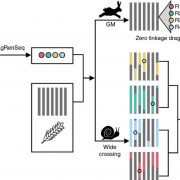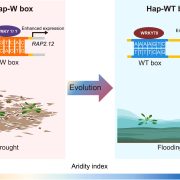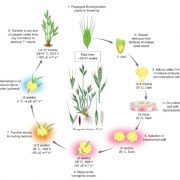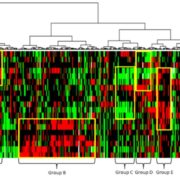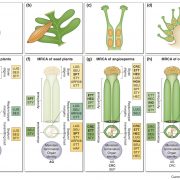Phylogenomic insights into angiosperm evolution
 Low-resolution data can provide broad strokes but miss the details that come from greater information density. When striving to understand the multimillion-year evolutionary history of the angiosperms, more data certainly helps. Here, by focusing on a subset of 353 genes, Zuntini and Carruthers et al. present a phylogenomic tree that increases the number of represented angiosperm genera by fifteen-fold and includes all 416 families. The dataset encompasses 7,923 angiosperm genera, is time-calibrated through the analysis of a 200 fossil dataset, and enriched by samples from 163 herbaria in 48 countries. What does all this effort reveal? The results are beautifully presented in Figure 1 (available for download as a very high-resolution image, if, like me, you’d like to print it as a poster). Several clades have been reassigned, split, or lumped thanks to the new deeper dataset. The full dataset highlights two periods of exceptional diversification in the angiosperms; the first shortly after they emerged, during which about 80% of extant orders originated, and the second about 40 million years ago. The paper includes an Inclusion and Ethics statement, in which the authors acknowledge the people who collected and curated these samples and the complex histories underlying natural history collections. (Summary by Mary Williams @PlantTeaching) Nature 10.1038/s41586-024-07324-0
Low-resolution data can provide broad strokes but miss the details that come from greater information density. When striving to understand the multimillion-year evolutionary history of the angiosperms, more data certainly helps. Here, by focusing on a subset of 353 genes, Zuntini and Carruthers et al. present a phylogenomic tree that increases the number of represented angiosperm genera by fifteen-fold and includes all 416 families. The dataset encompasses 7,923 angiosperm genera, is time-calibrated through the analysis of a 200 fossil dataset, and enriched by samples from 163 herbaria in 48 countries. What does all this effort reveal? The results are beautifully presented in Figure 1 (available for download as a very high-resolution image, if, like me, you’d like to print it as a poster). Several clades have been reassigned, split, or lumped thanks to the new deeper dataset. The full dataset highlights two periods of exceptional diversification in the angiosperms; the first shortly after they emerged, during which about 80% of extant orders originated, and the second about 40 million years ago. The paper includes an Inclusion and Ethics statement, in which the authors acknowledge the people who collected and curated these samples and the complex histories underlying natural history collections. (Summary by Mary Williams @PlantTeaching) Nature 10.1038/s41586-024-07324-0



